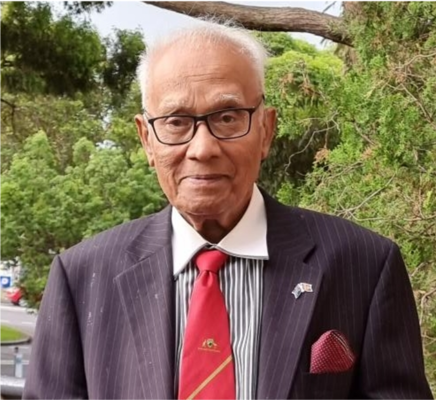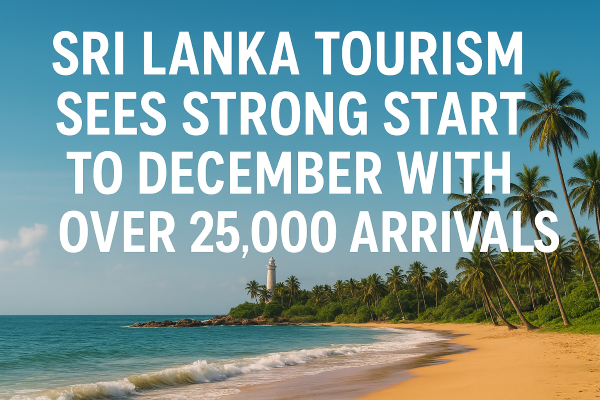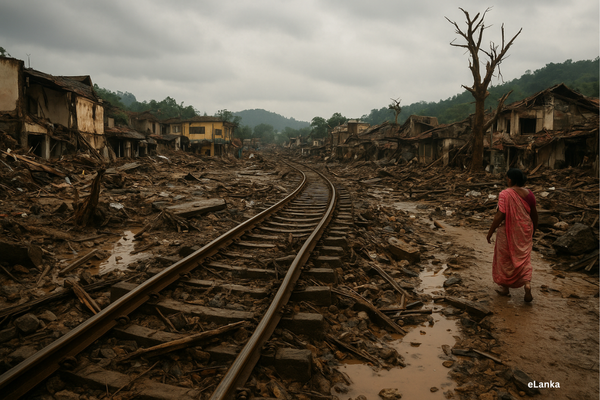The current government is working hard to build a bright future for everyone. – By Dr Harold Gunatillake

Image Source : freightbox.co.uk
Overview: The latest Sri Lanka Development Update, titled’ Better Spending for All, ‘ was published this month. It forecasts that Sri Lanka’s economy will expand by 4.6 per cent in 2025, driven by a modest recovery in industrial sectors and stable growth in the services sector. The projection anticipates a deceleration to 3.5 per cent in 2026.
While the economy is recovering, many Sri Lankans continue to struggle. Household incomes, employment, and overall welfare are still well below pre-crisis levels, and the poverty rate remained alarmingly high at 24.5 per cent in 2024, according to World Bank and IMF estimates. The World Bank noted that “poverty is expected to decline but remain above 20 per cent until 2026, gradually.
Let us examine the progress, if any, achieved by the current Government of Sri Lanka in its endeavours to forge a brighter future. We are keen to observe their efforts to improve conditions for all citizens.
The present government of Sri Lanka is principally dedicated to ensuring macroeconomic stability, implementing structural reforms, and enhancing social indicators, all of which are considered crucial for socio-economic development. Key initiatives include economic stabilisation through adherence to the IMF Extended Fund Facility program, which involves efforts to control inflation and improve fiscal health, as well as structural reforms aimed at increasing competitiveness. On the social front, emphasis is placed on continuous investments in human capital via improved health and education services, alongside the strengthening of social protection systems to ensure that development benefits are inclusive.
- Economic Domains
- Macroeconomic stability: Sri Lanka is actively working to stabilise its economy after a challenging period, with measures such as controlling inflation and maintaining a steady exchange rate, all aimed at fostering sustainable
- Structural reforms: The country is focusing on reforms that will enhance its competitiveness and attract additional foreign investment, while progressing away from debt-dependent funding.
- Infrastructure development: Initiatives such as “Maga Neguma” and “Gama Neguma” have been launched to improve rural Furthermore, Sri Lanka is upgrading its energy grid and establishing connections with neighbouring countries, for example, through the Indo-Sri Lanka power marine cable line.
Sri Lanka is planning the development of an extensive undersea power transmission line, commonly known as a submarine power cable, to establish a connection between its national grid and India’s national grid. This project, with an estimated cost of approximately $1.2 billion, aims to interconnect the power networks of both nations to enhance energy security for Sri Lanka. The transmission line will span from Anuradhapura, Sri Lanka, to Chennai, India.
- Sectoral growth: The service sector is experiencing notable expansion, particularly in tourism, ports, and The information technology industry is becoming more competitive, and the country is also a key manufacturing hub for industrial tyres, with its apparel industry progressing up the value chain.
Power Bridge To Lanka: India’s Undersea Cable To Sri Lanka Will Supply 500 MW Of Electricity
Image Source: linkedin
Social Areas
Human Capital: The government persists in investing in the education and health sectors, implementing targeted measures to enhance primary healthcare and efficiently manage both communicable and non-communicable diseases.
Social Protection: There remains a sustained emphasis on strengthening social protection frameworks to shield vulnerable populations and ensure equitable benefits from economic recovery.
Housing and Sanitation: The government’s social development agenda includes investments aimed at upgrading housing and sanitation infrastructure, and Future Directions Public debt: The levels of public debt continue to present a substantial challenge, requiring ongoing attention to fiscal sustainability in conjunction with growth initiatives.
Brain drain: The emigration of highly skilled professionals is a matter of concern that the government intends to address by fostering an environment conducive to retaining skilled workers within the country.
Inclusive development: Several key reforms are necessary to guarantee inclusive growth, especially in sectors such as digital access for small enterprises and the reduction of trade barriers in services.
Sri Lanka’s Gross Domestic Product experienced a 4.9% growth in the second quarter of 2025.
The GDP growth rate for the second quarter of 2025 has been reported as 4.9 per cent, indicating positive growth, according to the Department of Census and Statistics, Ministry of Finance, Planning and Economic Development.
The Department of Census and Statistics (DCS) has issued estimated Gross Domestic Product (GDP) figures at current prices and at constant (2015) prices, using the Production approach, alongside other macroeconomic indicators for the second quarter (April 1st to June 30th) of 2025.
The GDP at constant prices (2015) for the second quarter of 2025 has increased to Rs. 2,883,559 million from Rs. 2,749,504 million reported in the second quarter of 2024.24.
The Central Bank inaugurates “Financial Literacy Month 2025”, commencing on September 10th.
The Central Bank inaugurates Financial Literacy Month on September 10, 2025, marking a pivotal milestone in the nation’s progressive journey toward financial inclusion.
This initiative is being conducted within the framework of the Financial Literacy Roadmap, aligned with the Central Bank’s overarching vision of establishing a ‘Financially Literate Sri Lanka’.
Throughout the month, a series of significant activities will take place, emphasising the Central Bank’s unwavering dedication to equipping the public with the necessary knowledge, skills, and attitudes essential for transforming financial behaviour, promoting prudent decision-making, and advancing sustainable economic well-being.
Sri Lanka is projected to achieve debt-servicing capability by the year 2028.
President Anura Kumara Disanayake, delivering the keynote address at the international conference “Sri Lanka’s Road to Recovery: Debt and Governance” in Colombo in June 2025, stated that by 2028, Sri Lanka will have established the groundwork for a stable and self-sufficient economy, capable of independently fulfilling its external debt commitments.
This conference was convened to reflect upon Sri Lanka’s experiences, lessons learned, and progress achieved during the debt restructuring process. Additionally, it aimed to discuss advancements and forthcoming challenges related to the Extended Fund Facility programme in collaboration with the International Monetary Fund.
Central Bank Governor Dr Nandalal Weerasinghe reiterated these sentiments, acknowledging the support of the IMF and international partners in Sri Lanka’s recovery from a historic crisis that resulted in a sovereign default in 2022. He recalled the severity of the situation, characterised by hyperinflation, shortages, and institutional erosion, and attributed the collapse to years of fiscal mismanagement and unchecked vulnerabilities.
“Stabilisation was merely the initial step,” he stated. “The true challenge resides in maintaining growth through structural reforms.”
He emphasised the progress achieved under the EFF programme, including: Curbing inflation – now reduced to single digits; Restoring external balances – including rare current account surpluses and reserve growth; Enhancing fiscal discipline – with narrowing deficits and emerging primary surpluses.
Advancement in Tea Exportation
Sri Lanka’s tea exports for 2025 are showing a positive upward trend. From January to July, exports totalled 150.85 million kilograms, representing a 10.38 million-kilogram increase over the same period in 2024. The average Free on Board (FOB) value per kilogram has increased to around US$5.87 in these first seven months, setting a record for Ceylon Tea. This encouraging growth is primarily due to a strategic focus on value-added products, such as tea packets and bags, along with strong demand from markets like Iraq, Libya, and the United Arab Emirates, despite facing a few challenges, including climate change and ageing infrastructure.
Furthermore, Sri Lankan black tea has proudly established a Guinness World Record in Japan.
New Withanakande Ceylon Black Tea (FFExSp) has officially been recognised in the Guinness World Records as the most expensive tea ever sold, achieving an unprecedented price of 125,000 Japanese Yen (approximately US$860) per kilogram at the annual Ceylon Special Estate Tea charity auction.
The auction, collaboratively organised by the Sri Lanka Tea Board and the Colombo Tea Merchants Association, was conducted concurrently with the World Expo Osaka in Japan. A total of 27 winning teas from the 2025 Ceylon Special Estate Tea Competition, representing all seven principal tea-growing regions of Sri Lanka, were showcased at the event.
Image Source : facebook
Sri Lanka’s exports exceeded $1.3 billion in January 2025, initiating the year with remarkable growth.
Sri Lanka’s exports exceeded $1.3 billion in January 2025, indicating a robust and promising commencement to the year. This extraordinary growth exemplifies the resilience, innovation, and competitiveness of Sri Lankan industries, thereby fostering the foundation for enduring economic prosperity.
Summing Up
Sri Lanka’s socio-economic progress in 2025 is marked by a continued, yet slowing, economic recovery driven by the industry and services sectors, alongside efforts to enhance governance and financial stability. GDP growth remained positive, with projections for 2025 ranging from approximately 3.9% to 4.6%, supported by robust industrial output, a growing services sector benefiting from tourism, and infrastructure development.
However, the agriculture sector experienced contraction, and challenges persist, including poverty, a sluggish recovery from crisis-related “scarring,” and the ongoing need for structural reforms.
Be proud of being Sri Lankan, wherever you are. Embrace your heritage with pride and let everyone see your wonderful identity!
End
























